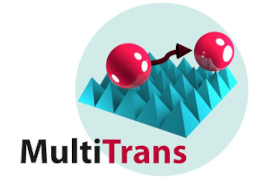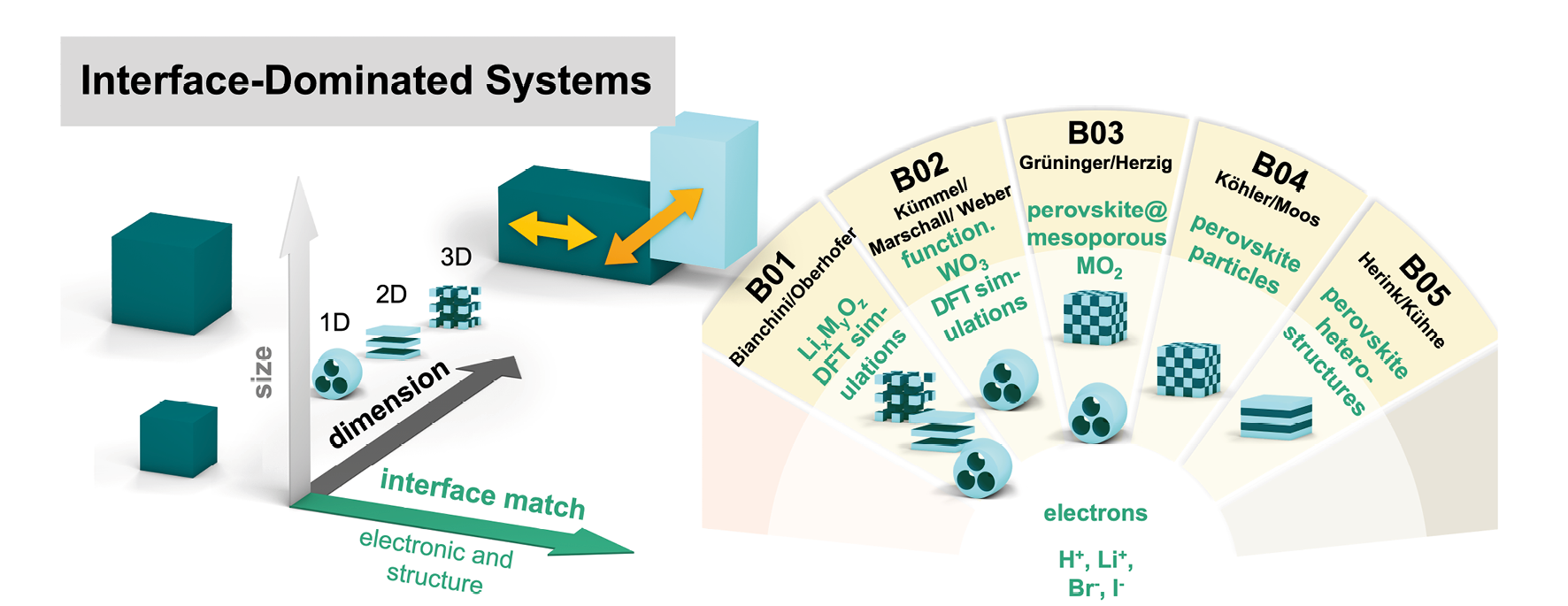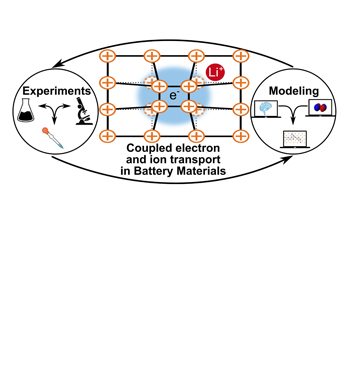
Project B01: Correlated ion and electron transport in Li-ion battery cath-ode materials
Project B01 investigates the transport of electrons and ions in battery electrode materials as a function of their structure and grain size. We will synthesize materials with different dimensionality of the percolation channels and particle sizes, to unveil the impact of confinement on both carrier types by studying their mobilities. First-principles calculations and machine learning will be used to construct a multi-scale model of the transport of both carriers in these structures. This approach will uncover ways to link or decouple electron and ion transport, hinting at future rational design criteria.
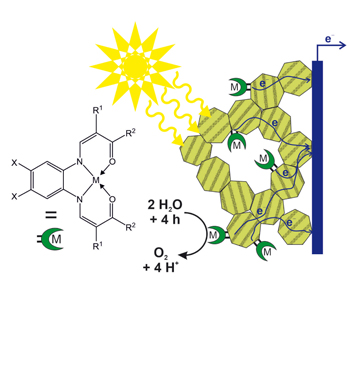
Project B02: Electron transfer in semiconductor electrodes with immobilized 3d metal complexes for photoelectrochemical water oxidation
Project B02 will develop and investigate a novel photoanode architecture for water oxidation. Tailor-made metal complexes will be immobilised as catalysts on highly active mesoporous semiconductor photoelectrodes. This will mediate the electron transport across the interfaces from the semiconductor to the complexes and the electrolyte, as well as the electrolyte transport in the channels of the pore system. Thus, electron transport is linked with mass transport inside the porous channels. Additional DFT calculations will yield information on the electronic coupling between the semiconductor-complex interfaces, and on the charge transport through the combined systems.
- Prof. Dr. Stephan Kümmel
- Prof. Dr. Roland Marschall
- Prof. Dr. Birgit Weber
- Patricia Hoffmann
- Matthias Knodt
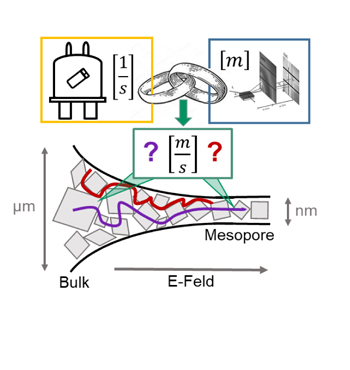
Project B03: Controlling ion and electron transport in hybrid perovskites confined in mesoporous matrices
Project B03 investigates ion and electron transport in hybrid lead halide perovskites confined in mesoporous matrices as a function of pore size and geometry, and interface interactions. External electric fields are used to trigger ion and electron transport in the structured composites and the transport pathways will be analysed in-situ to yield structural and dynamical information locally and globally. Through the transition from bulk transport to transport in systematically restricted nanopores, and associated interfaces, we expect to understand and separate ion and electron transport.
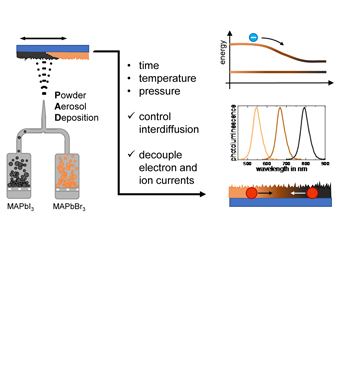
In Project B04: Nanostructured hybrid perovskite films by aerosol-based cold deposition for controlled ion and electron transport
In Project B04 we aim to separate electron from ion transport in halide perovskites (HP) through nanopattering, which is achieved by depositing different HP compositions with varying grain sizes via powder aerosol deposition. This can yield periodic variations or composition gradients over multiple length scales. Additives or optional pressure and heat treatment are used to modify the interfaces at the grain boundaries. Using electrical and optical spectroscopy we address how the confinement by the interfacial structure can suppress ionic currents while maintaining electron transport.
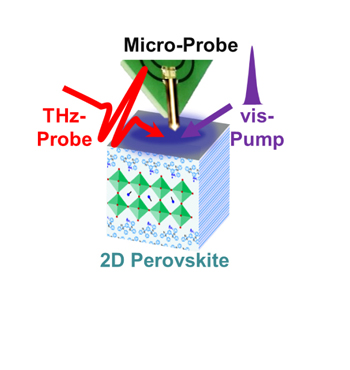
Project B05: Control of charge transport in hybrid 2D perovskite hetero-structures with organic semiconducting and ion-conducting interlayers
Project B05 employs 2D perovskites to study and understand photo-induced electronic transport in 2D confinement by introducing semi- and ion-conducting molecular interlayers into the hybrid organic-perovskite heterostructures. Variations of the perovskite thickness will control the free-carrier generation and the interface-dominated electron transport within the confined layers. We will study the carrier mobilities and implement multiple methods to separate charge generation and long-range transport. Using near-field techniques, we will study the impact of intrinsic structural inhomogeneities. Along with electron transport, we will also study the role of ionic conductivity and ion-doping in the interlayers.

